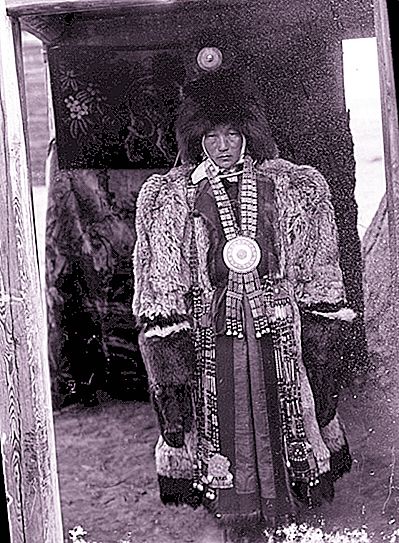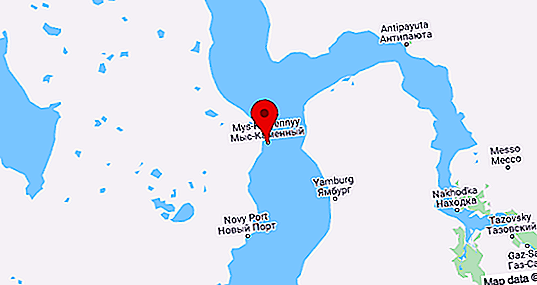The national costume is largely determined by such factors as climate, history, culture. For example, in cold countries, natural furs are used as parts. Often there are national ornaments embroidered on fabric or religious symbols. At present, they dress in national costumes during public holidays and festivities and for performing national dances and songs.
Yakutia: territorial location, climate, history, culture
At the moment, it is part of the Russian Federation, in the Far Eastern Federal District. The climate there is severe, northern, with short summers and long winters, during which the air temperature can drop to 50 degrees below zero. This factor explains the use of fur and leather in a suit. As a nation, the Yakuts (aka Sakha or Sahalar) came from the Tungus, Paleo-Asians, Mongol and Turkic nomadic tribes. For this reason, in the details of the national costume there are traditional elements of clothing and other nationalities. In ancient times, the Yakuts professed a religion called Ayyy. Even now, in their traditions, to celebrate the Ysyakh festival, where the Gods of Aiyy are glorified, there are shamans and throat singing is used.
Samples of the first national costumes
It is believed that the history of traditional Sakha clothing begins in the 13th century. Then for the heat used furs and animal skin and rough cloth. The garment was decorated with a national ornament, which was applied to the fabric by embroidery. When the Yakuts mastered cattle breeding, the main material was the fur of domestic animals. He also decorated the suit, for example, sewn cuffs or collars. In addition, the clothes were also decorated with velvet. One of the oldest is considered to be a tangalai costume. It was a rawhide product with fur inserts in the upper part of the sleeve. The waist was decorated with metal jewelry, cuts were present on the sides. At the moment, such a suit is no longer worn.
Modern types of cut
There are several traditional elements of tailoring in the Yakut national costume. The most popular cut is called "onoloooh, buuktaah", and includes the following elements:
- Sleeve "buuk". Lush, loose, sometimes with builds.
- "Onoo." These are the creases on the back of the suit.
Another cut of "kytylyah". Its feature is the presence of wide strips of cloth material on the sides of the suit. Often when decorating, red color is used.
National costume for adults
When sewing clothes for women, practical and natural fabrics are used, such as, for example, satin and chintz. Silk and satin are used to create festive garments. Women's national costume means decorating with embroidery, beads and fur ornaments.
Traditionally, the fair sex wore a large number of jewelry. Metal or beaded hoops with links falling down along the face were worn on the head. Hair was also adorned - the mowler was called Sukhukh or Kiiste and was attached using rawhide straps. The famous breastplate is the kebiher or ilurekh pendant, which resembles a cross in shape. In the manufacture of used techniques such as blackening and gilding. A large number of jewelry expressed respect for the woman as a continuer of the clan, in addition, some of them played the role of amulets and talismans.
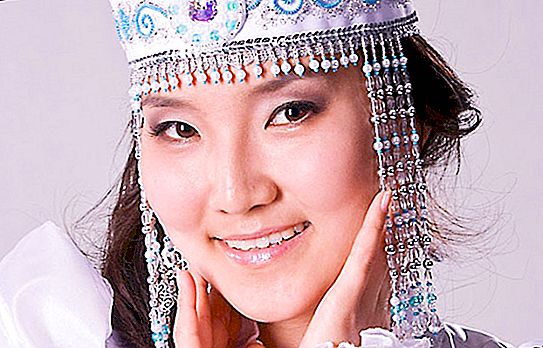
The women's coat is called sanyah. It is made from fox, sable and wolf fur. The wedding version is decorated with a fur pattern in the form of bird wings.
The full wedding suit included the following elements: a blanket on the face - anna, a rawhide shirt, knee-highs - knickers, leggings - from the knee to the ankle, a doha - a fur coat with a pattern of wings, a dubaka - a headdress with a protrusion on the crown, a bit like a military helmet. Of course, a large number of jewelry was attached to the wedding attire: on the head, neck, hands.
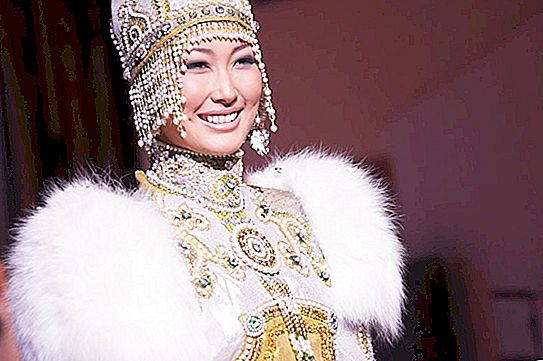
The Yakut men's national costume looked much more modest than the female. The fur trim on the collar and cuffs was necessarily present. She differed in the volume and height of the pile. Along the edge of the hem, sleeves, and also along the sides of the fur coats and capes, traditional patterns were embroidered, most often blue, beige or brown. The man’s headgear resembled a military helmet. It was made of natural fur. Thanks to the ties, the neck and ears were reliably protected from wind and frost. Some hats were decorated with ears, which symbolized the connection with space and the universe. Another element of the decor is the full moon or sun, which meant the continuation of the genus. Also, caps were sometimes decorated with lush fur tails on the crown.
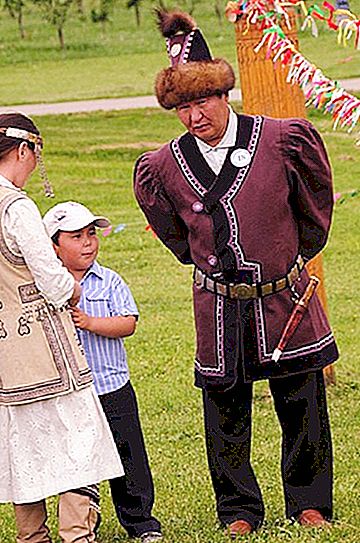
What they put on their feet
Shoes for both men and women were high boots - thousand eterbes. They were made from the skin of a shin of a deer - kamus, and were sewn with felt. In such shoes it was possible to feel comfortable in the cold up to 50 degrees below zero. Another option is a torbase. Such shoes were made of cloth and leather and were sewn with felt and wool. It got off with the fur of a red fox, silver fox or beaver. The most popular shoe colors: gray, beige, brown, black. Of course, the female version was decorated with beads, embroidery, patterns of fur.
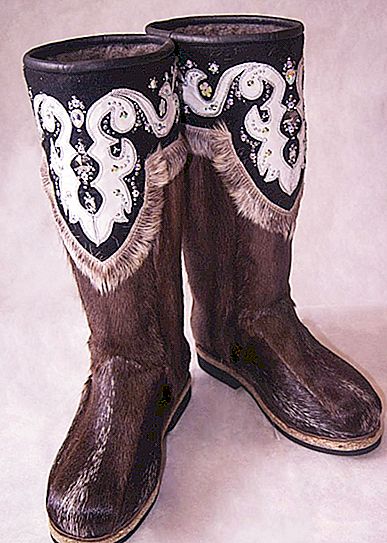
Summer shoes were called terehe and consisted of shortened boots.
Yakut children's national costume
Almost completely copied the clothes of adults. The Yakut national costume for the girl was a small copy of the clothes of an adult Yakut. Children also wore various ornaments made of metal, beads and fur.
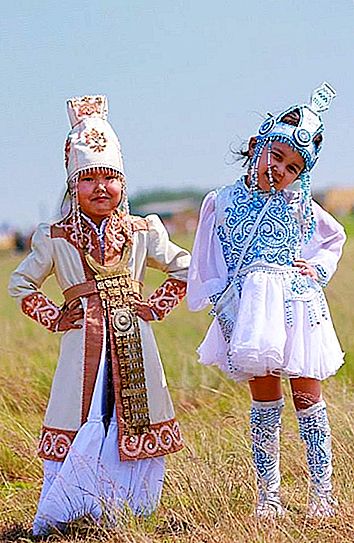
The Yakut national costume for the boy was no different from the attire of an adult man. Fur trim and modest embroidery - these are the components of the costume of a small Yakut.
Ritual clothing
For communication with the spirits of the Yakuts, a special person was responsible - a shaman. His attire was different from the costumes of ordinary people, and some of his details could have a special ritual meaning. For example, many costumes were decorated with fringe, reminiscent of plumage, along the sleeves and on the back. This design symbolized the bird. Putting on such a suit, the shaman got the opportunity to "fly" and communicate with other worlds. In addition to the fringe, to identify themselves with the bird, their images were applied to the robe itself and used as pendants. Basically it was a loon, a crane, an eagle and a duck. The main material for tailoring was the skin of a stallion with wool outward. Special attention deserves the headdress of a shaman. The material was the hide from the head of the stallion, on which ears and mane were left. Such a headdress was not decorated at all; ordinary people could not wear it.
